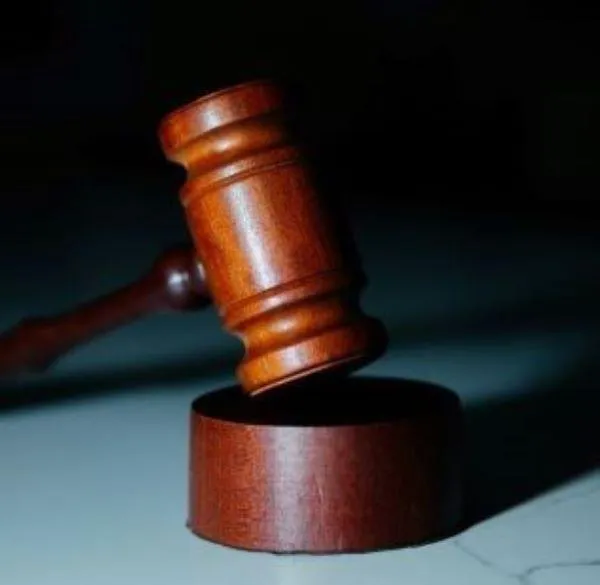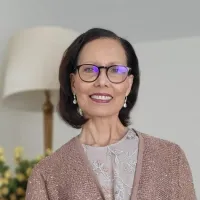Solid Ground Topics
"Building Leadership, Purpose, and Healing on Unshakable Truth"

White Rage
Introduction
Watching Carol Anderson's video (see link below) was extremely timely and informative. Although it was produced in 2018, its relevance for today is no accident. But before I continue, let me introduce Carol Anderson. She is a professor of African American studies at Emory University. Her book, White Rage: The Unspoken Truth of Our Racial Divide, was published in 2016. The video shows Professor Anderson lecturing to a group of people at Emory. Most of the presentation is based on her research on writing the book, as mentioned above.
Because of the current climate in America, I decided to summarize Professor Anderson's main talking points, as a great deal of historical information helped me understand some of the issues our country is still struggling with today. All the main talking points resonated with me, so forgive me for interjecting my insights. At times, I will present my personal insights versus those of Professor Anderson. Whether you agree or disagree with my video summary, please watch it yourself or purchase the book.
1999–2014
Professor Anderson begins by taking the audience through her initial reaction when she watched the news coverage of a Black man in the Bronx who was shot by NYPD in 1999. The young man was named Amadu Diallo, and four officers fired 41 bullets (19 struck him) at the unarmed man as he was on his balcony.[1] Following the shooting, Mayor Rudy Giuliani denied any wrongdoing by the officers and doubled down on how the NYPD was the most restrained police force in the country. According to my husband, who was in the NYPD force at the time, the police were being armed and exploring military weaponry—some with a gleeful abandonment that is typically expressed by hunters at the beginning of deer season. Back to the video. Professor Anderson could not believe the rhetoric coming from the mayor. She then moves forward to 2014, when Ferguson, Missouri, was burning. She recounts that every news media station, right and left-leaning, was repeating how the Black people were burning up their neighborhoods and lamenting how Black rage was running amok. And here's where the lessons begin.
Black Pathology
The first is that she realizes that the dominant culture needs a Black pathology narrative or verbiage that describes our behavior as though it is a disease or epidemic to be studied. In this case, the verbiage used (and still is to this day) was something like 'they are thugs,' 'they don't value education,' or 'if only they would ____ (fill in the blanks). At this moment, Professor Anderson discerns that this is not Black rage. Instead, she argues, it is White rage. And because of the flames from the Ferguson fire, people missed the kindling that had started it.
The Kindling
Professor Anderson focuses on the root causes of what happened in Ferguson:
At the time, Ferguson was 67% Black; however, the voter turnout rate was only 6%. How could this be? She posits that when people have been disenfranchised, in conjunction with Jim Crow voter suppression, they often do not feel as though they have a voice or can affect what is happening.
She talks about the educational system. On a 140-point scale of how well a school is performing, the school that Michael Brown attended only achieved 10 points out of the 140. For 15 years, an entire generation had been neglected and missed out on a required education.
Brown grew up in a working-class neighborhood. The local politicians decided to use the community to generate a significant portion of their revenue—25%, to be exact. So, in cooperation with the police force, ticket after ticket was handed out to the community for the slightest infractions.
At this point in the video, I couldn't help but think that I may have missed the NYPD Amadu shooting from 1999, but I certainly did not miss the Michael Brown shooting and subsequent Ferguson fires. The question is, have we made any progress since 2014 in terms of voter suppression, quality education in all school systems, or policing in Black communities?
White Rage Defined
Professor Anderson flips the narrative on Black rage and states that what was being displayed was White rage. How? White rage is subtle, it is not visible, it is corrosive, and it has infiltrated state legislators, congress, the judicial system, school boards, etc., and it cloaks itself in legalities. Interestingly, Professor Anderson concludes that it is not the so-called Black rage that causes the White rage; instead, it is that the dominant culture is afraid of Black people when they begin to have ambition or start to pull themselves up by their bootstraps or when they demonstrate resilience and resolve. I'm not entirely sure I agree 100%, but her assessment regarding the cause of White rage has undoubtedly given me something to think about.
Legalities and Reasonableness
In her presentation, she continues with additional examples of how White rage cloaks itself in legalities and reasonableness. Another example is a case in Prince Edward County, Virginia, in the early 1950s. To summarize, the schools were segregated, and the Brown v. Board of Education decision had not yet been made. The Black parents advocated for an additional high school, but the school board was unwilling to provide a decent building for the Black students. After several years of back and forth, the Brown v. Board of Education was decided in 1954, and schools would have to integrate. Rather than integrate, the Prince Edward County school board closed all the schools, Black and White. They remained closed for five years. Five years. However, the school board and White parents decided to use a voucher system to fund the white schools. So, for those five years, White children continued to attend school while the students in the Black community did not. This practice was implemented in many communities across the country after the Supreme Court decision. What was so insightful was that I did not know the school vouchers' historical origins. I do recall years ago not being a fan because I could see how the inner-city schools were being 'legally' disenfranchised. A question to ask is whether we have been duped into thinking that a voucher system is fair and equitable and a way to help all schoolchildren?
War on Drugs
Another example of how White rage cloaked itself in reasonableness is when the country decided to go to war on drugs to keep our neighborhoods safe (sounds reasonable). And yet, the ones who used the drug of choice, cocaine, the least (Black people) were targeted. From this war on drugs, the incarceration rate for Black males skyrocketed. One trillion dollars was siphoned off the educational budget to go towards the correctional budget. And along with that, millions of Black men are now ineligible to vote. In Florida, for example, once a felon has served parole plus an additional fourteen years, only then can they petition to regain the right to vote. My question and outright cynicism are: How is it that felons who have served their time and must also have to jump through almost insurmountable hoops to regain the right to vote and invariably end up permanently discharged of that right? And yet, how can a convicted felon run for the highest office in the country? Let's put a pin on that one.
No Cross Burnings
The last few points from the video I will mention are the extent to which White rage has gone to disenfranchise Black, Hispanic, Asian, and low income voters since Obama's victory in 2008. Contrasting 2008, when there were 15 million new voters primarily from these demographics, to the 2016 election, where there was a 7% decline (primarily among the Black voters). However, this was not because of Black turnout but rather a result of systematic voter suppression. What was done in states like Alabama and Texas was shameful. And guess what? It has gotten worse.[2] (I implore you to watch the video or read the book for specifics.) Professor Anderson makes the case that in recent history, all the voter suppression and other legal maneuverings have been committed without one cross-burning or clan rally. It was perpetrated through judicial robes. It has been perpetrated under our watch.
Alienated Masses
In closing, I want to leave you with these thoughts. Professor Anderson stated that the 15 million new voters for President Obama represented the alienated masses engaging in the process, which was a good thing. She argues that the consequences of the alienated masses, people with low incomes, Blacks, Hispanics, and Asians not engaging are an indication of a society getting ready to quake. I interpreted this as a revolt of sorts. History bears out that the disenfranchised and downtrodden will only put up with so much and for so long. And this current election has some earmarks and rumblings of people feeling left out and alienated. People who would rather sit this one out or engage in trying to steal the election.
Crossroad
We seem to be at a crossroad in this country on so many levels. Forget the politics of things in terms of voter suppression for a moment. The question is: How long will POC and low-income people continue to be denied, duped, and delayed basic human rights and decency because of White rage cloaked in legalities and reasonableness? This is not the time to dismiss basic government and civic lessons. Those that traffic in twisting or reversing hard fought civil rights are counting on citizens being ill-informed or totally clueless.
I’ll end with this: In his 1903 book The Souls of Black Folk, W.E.B. DuBois used the phrase in his introduction, titled "The Forethought," writing, "This meaning is not without interest to you, Gentle Reader; for the problem of the Twentieth Century is the problem of the color line." And 121 years later, those words still ring true. I don’t know about you, but I will continue to speak out and advocate for an end to the color line once and for all. For the sake of my children’s children. The question is: Will you join me?
White Rage: The Unspoken Truth of Our Nation's Divide
[1] https://www.history.com/this-day-in-history/amadou-diallo-killed-by-police-new-york-city
[2] https://www.brennancenter.org/our-work/research-reports/impact-voter-suppression-communities-color

